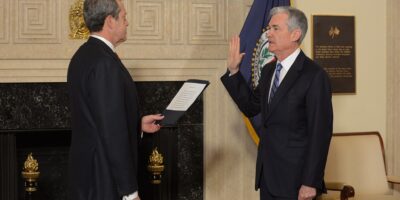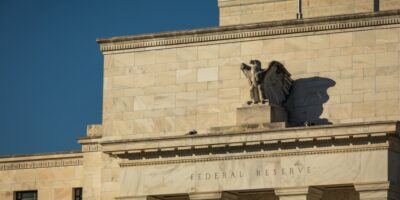Big Data, Monetary Calculation, and Monetary Authorities
In an earlier article debunking the idea that big data makes a centrally planned economy feasible in the 21st century, I emphasized that money prices play an indispensable role in rational economic calculation. Although money doesn’t eliminate all the complexities of economic calculation, it serves as an indispensable aid to the human mind. It’s certainly possible for governments to eliminate money, as Marx suggested. But the results are disastrous. The Soviets learned this lesson the hard way in the 1920s. It took another six decades for them to realize that rational economic calculation under central planning, even with money, is also impossible.
In the words of Uncle Ben from Spiderman (and echoing Voltaire and Machiavelli), “With great power comes great responsibility.” Since monetary authorities control money, the most important asset in the economy, they bear enormous responsibility. For a market economy to operate at maximum efficiency, the market for money needs to be kept as close to equilibrium as possible. Any disruptions or interventions by the government or central bank that distort that market in turn distort relative price signals. This, in turn, causes resources to be mal-invested, moving the economy inside its sustainable production possibility frontier.
It is precisely because this responsibility is so great and the knowledge required to maintain monetary equilibrium so tacit and dispersed throughout an economy that a competitive money-and-banking system is so essential. This is why I and many other contributors at AIER support competition in the supply of both outside money (i.e., base forms of money issued outside the banking system) and inside money (i.e., bank-issued forms of money that serve as redeemable claims to outside money). This is also why policy makers would be wise to consider the sort of reforms outlined by free-banking scholars. No centralized monetary system, no matter how smart or well-intentioned its leaders, has access to the sort of knowledge required to maintain the optimal quantity or distribution of money to maintain monetary equilibrium. This is why competitive, decentralized monetary systems are preferable to top-down systems. As numerous authors have alluded to on this blog, the evidence strongly supports this claim.
But do new technology and the rise of big data do anything to mitigate the knowledge problem confronted by central banks? After all, if central banks can access information on changes in money supply and demand conditions almost instantaneously, why should we strip them of their authority and hand the reins over to the private sector?
As in my earlier discussion on whether big data renders central planning writ large feasible, the answer, in short, is no. The rationale is largely the same. The problems any central monetary authority will inevitably encounter in managing the money supply cannot be boiled down to a mere lack of information. No amount of backward- or forward-looking data can substitute for the knowledgeabout relative money-supply and money-demand conditions that is dispersed among individuals and banks at the micro-level. And that knowledge cannot be tapped into outside the institutional context that gives rise to it.
If, to take an extreme example, the banking sector were nationalized and private money provision were entirely eliminated, how would a central bank determine the proper supply of money? For starters, it would have to have access to knowledge of changes in money supply and demand conditions at the local level. Presumably it could collect data from local bank branches to help inform its decisions, but any type of backward-looking information it relied on would do nothing to address the well-documented “long and variable lags” in implementing monetary policy. Even if the central bank properly adjusted the quantity of money to maintain monetary equilibrium, there would be no guarantee that that new money would be distributed into the hands of the individuals who demand it, or that by the time that new money did arrive, individuals’ money demand would not have already changed again.
Even after the central bank had made what it deemed an appropriate adjustment to the money supply, how would it confirm its decision was a success? It’d have to rely on a variety of price signals and access the tacit knowledge inside each individual’s head to determine whether their decisions aligned with what each person ultimately desired. Since optimal monetary policy must also be forward-looking, central bankers would have to not only utilize backward-looking big data but also develop some sort of mind-reading technology that would allow them to predict changes in the preferences of money holders.
Further, there is such a thing as too much data. It is possible that central bankers in an era of big data could lose the signal amid the cacophony of data directed at them if they don’t have a refined focus on what indicators they should prioritize.
But if central banks focus on the sort of indicators they should be focusing on, like total nominal spending, they can very likely improve the performance of monetary policy. Indeed, much of the relative success the Fed experienced during the Great Moderation resulted from its refined focuson relevant variables like the growth in total money aggregates and total spending. More data isn’t necessarily better, but better data combined with sound economic theory is likely to yield better monetary policy.
While technological improvements in data collection could, in theory, improve central bank performance, their benefits would be even greater under a system of free banking backed by some market-determined money. Individual banks are best equipped to access and quickly meet changes in the demand for inside money among their customers. If they could harness the power of big data to streamline this process, it’s very likely the economy would benefit. And the more relevant information banks have on loan applicants and potential investment opportunities, the better job they are likely to do in allocating their customers’ scarce savings. Any improvements in the efficiency of the process of financial intermediation would serve to push out the economy’s sustainable production possibility frontier and accelerate economic growth.
The same rationale also applies to the provision of private forms of outside money. In his paper “Synthetic Commodity Money,” George Selgin outlined how private cryptocurrencies like Bitcoin could be modified to more closely approximate the behavior of an ideal money. Even if crypto-entrepreneurs saw no benefit from designing a cryptocurrency that achieved certain desirable macroeconomic objectives, it’s at least theoretically possible to imagine that the Federal Reserve could give way to a Friedman-like money growth protocol that adjusted the supply of dollars in such a manner. Although such a reform is admittedly politically impossible, Selgin briefly outlines what it might look like in the final chapter of his The Theory of Free Banking.
We’re a long way from seeing any of these bold proposals come to life. But thanks to the rapid advance in technology we’ve experienced in recent years, it’s nice that we can at least begin having the conversation. Even a monetary economist can dream a little, right?










